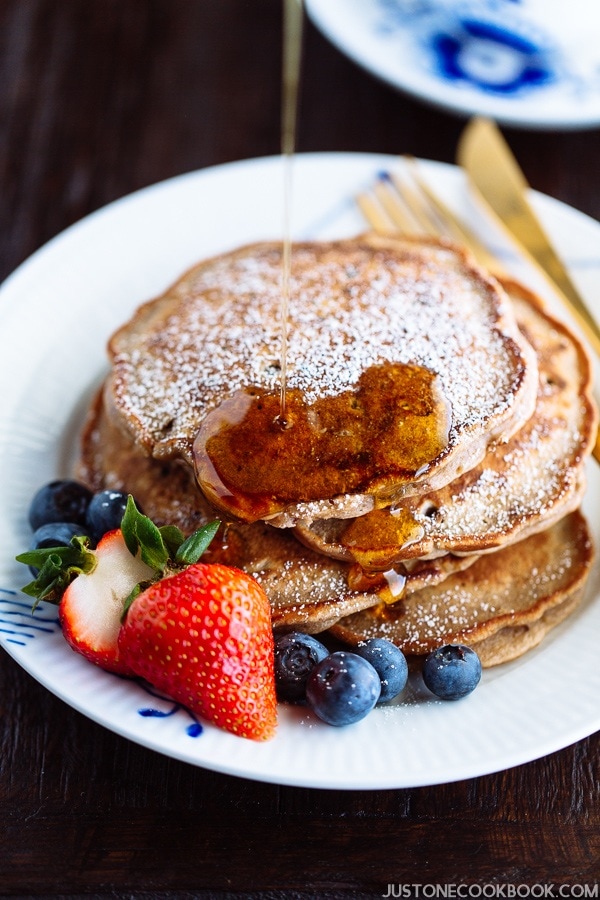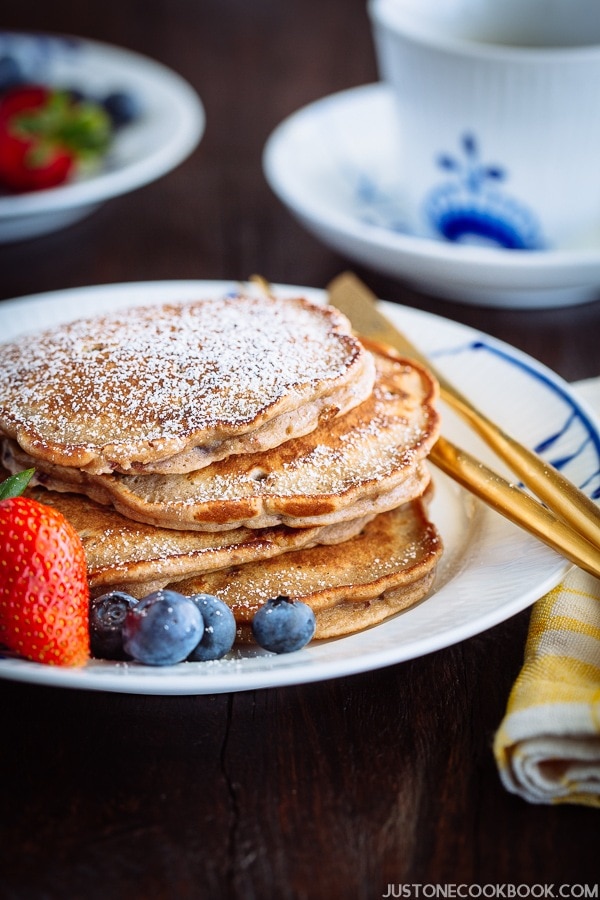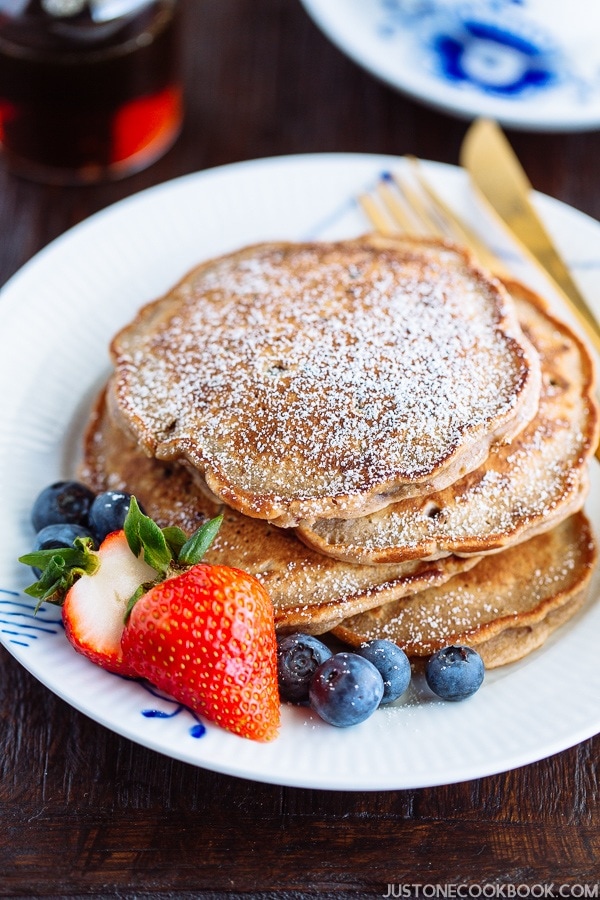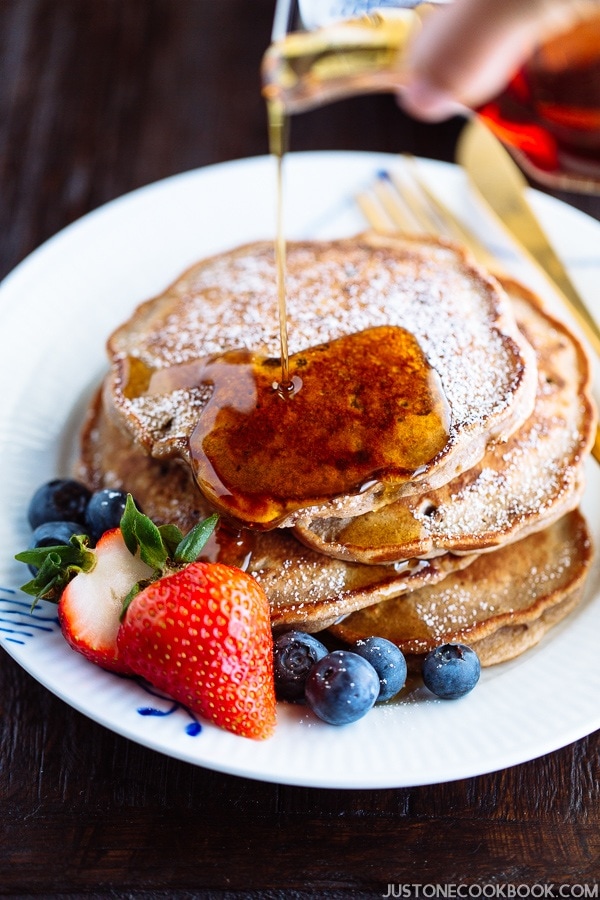If you love Japanese red bean sweets such as Daifuku, Taiyaki, Anpan, and Dorayaki, you will love this Red Bean Pancakes! These pancakes may look like ordinary pancakes, but they are moist, light and fluffy, with just a hint of sweet red bean paste. If you can’t’ get enough of delicious red bean paste in your sweets, why not also have it for breakfast!
Red Bean Pancakes for Breakfast
Full confession, these red bean pancakes are not “common” pancakes in Japan. I’m sure people may make these pancakes at their home, but my mom never made them. I don’t quite remember how I ended up making these pancakes in the first place. Most likely I had leftover red bean paste in the refrigerator and decided to add it to the pancake batter one morning. What not to like, right? I love pancakes for breakfast and we make different variations at home. Since I love anything that has red bean in it, this became an instant hit even among my family members. Since then whenever I have some leftover red bean paste in the container (you just need one cup), I whip up these red bean pancakes for breakfast (or snack).
Red Bean Pancakes – Deconstructed Dorayaki
The red bean paste gives nice moist texture to the pancake batter. It’s kind of like deconstructed dorayaki. But as red bean flavors are spread out into the batter, the “red bean” flavor is not as strong as dorayaki. It’s definitely easier to make these pancakes at home compared to dorayaki. As red bean paste is already sweet, and even sweeter if you buy pre-made red bean paste. Dilute the red bean paste with water in the saucepan first to easily incorporate into the batter. As far as toppings and sauces go, I like how maple syrup matches perfectly with red bean pancakes. Even though it’s already a bit sweet from the red bean, I still like to drizzle just a little bit on mine. For the looks, I also sprinkle a bit of powder sugar. It’s a little Asian twist on basic pancakes and I hope you give it a try, especially if you have some small amount of red bean paste in your refrigerator and don’t want it to go to waste.
Wish to learn more about Japanese cooking? Sign up for our free newsletter to receive cooking tips & recipe updates! And stay in touch with me on Facebook, Pinterest, YouTube, and Instagram. Editor’s Note: The post was originally published on March 16, 2011. The images, the content, and the recipe have been updated in June 2017.





